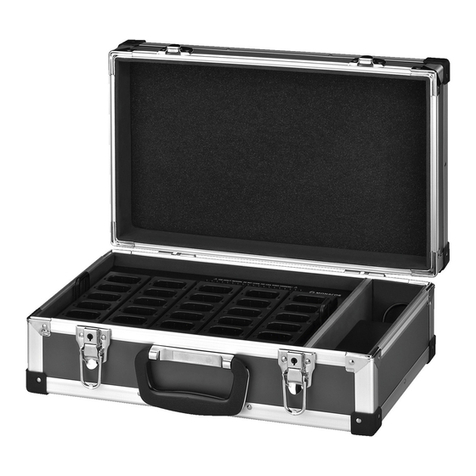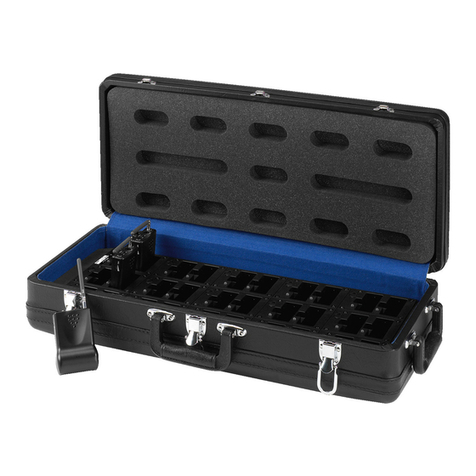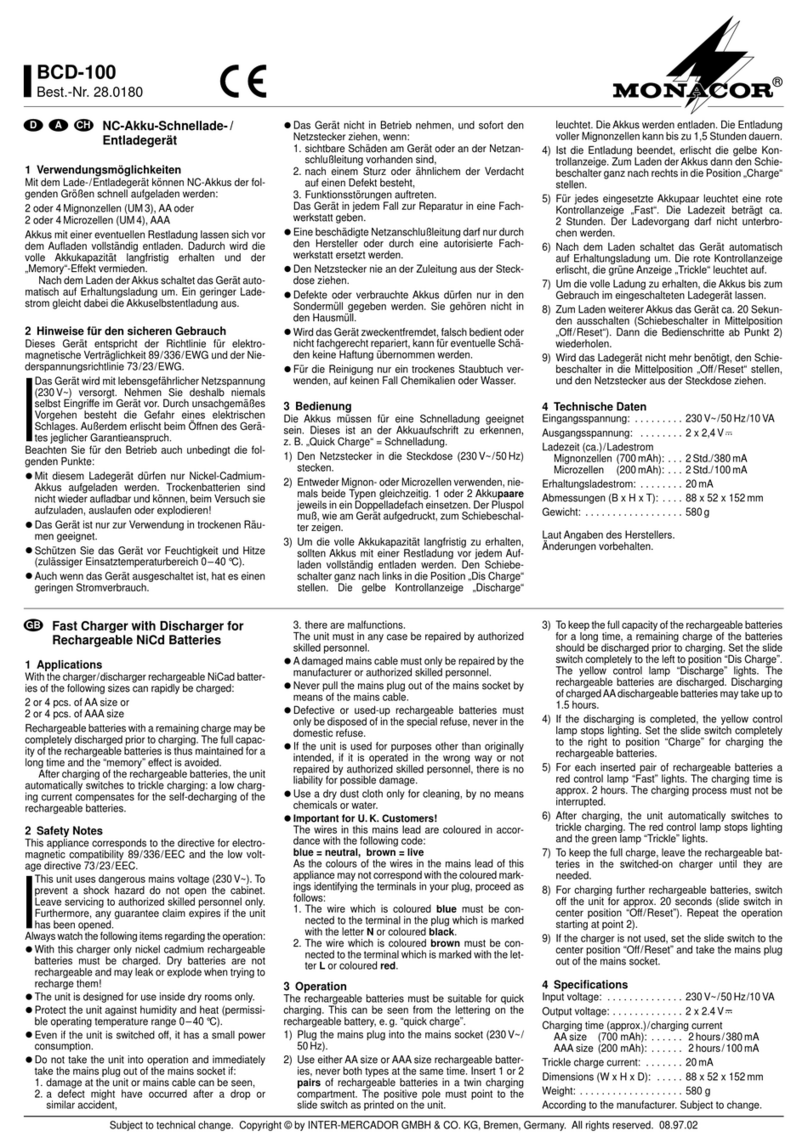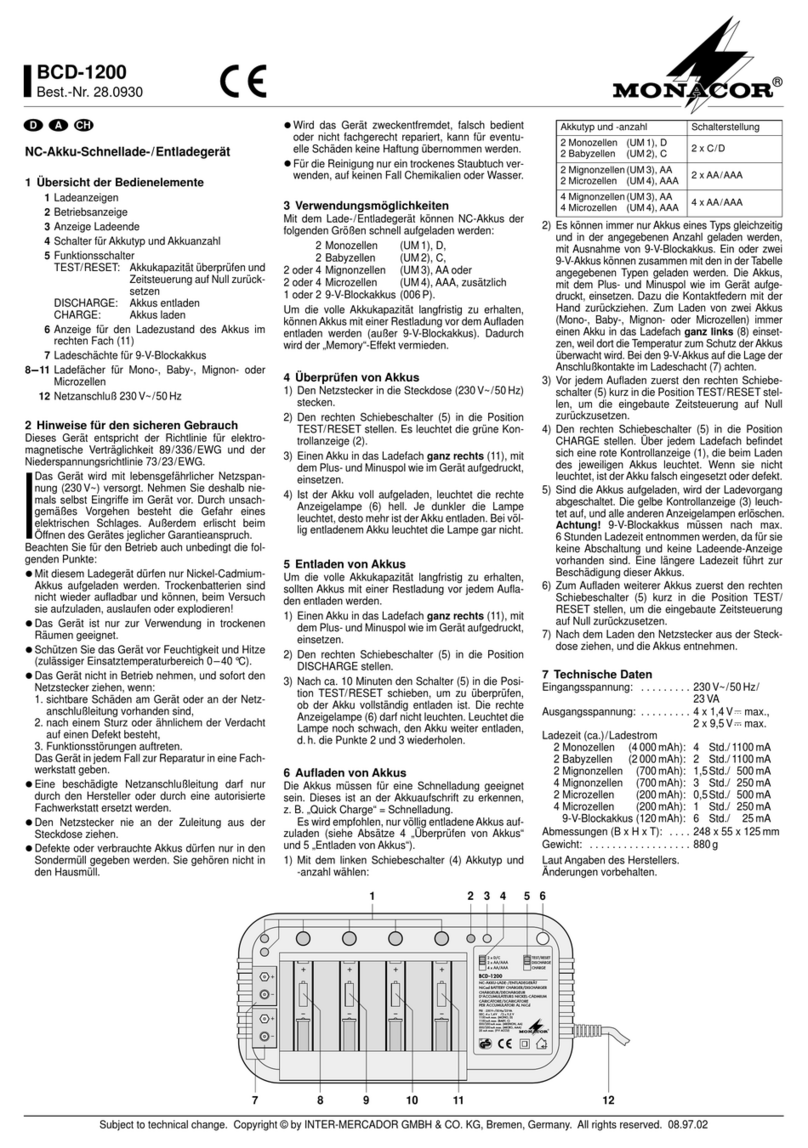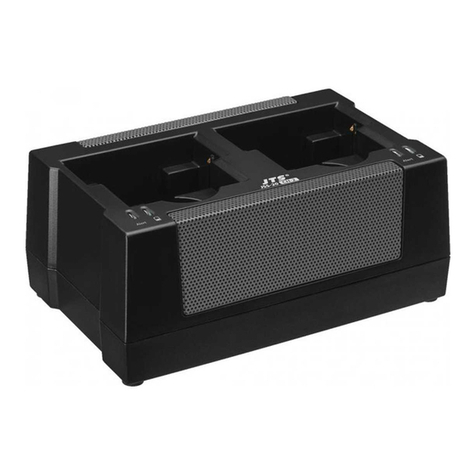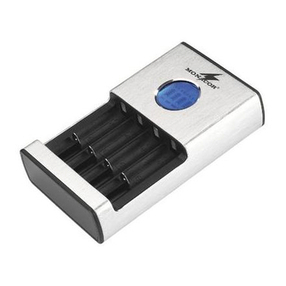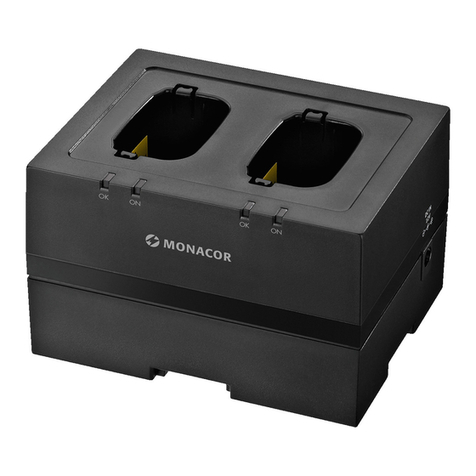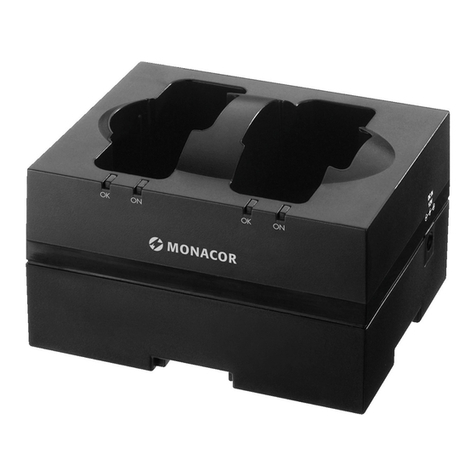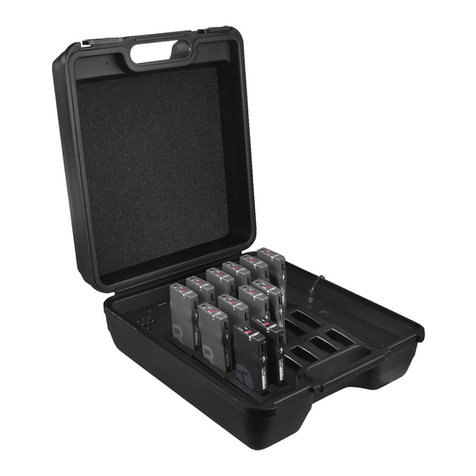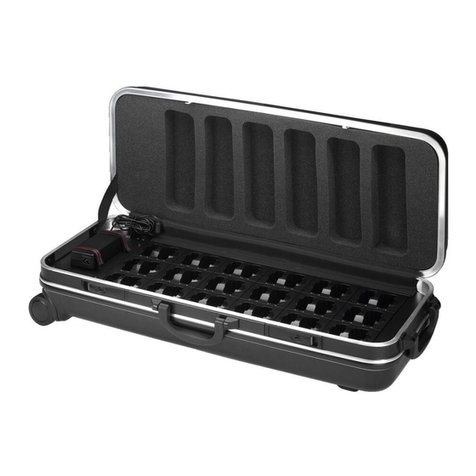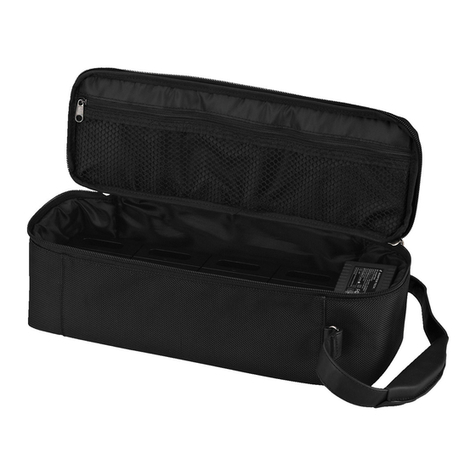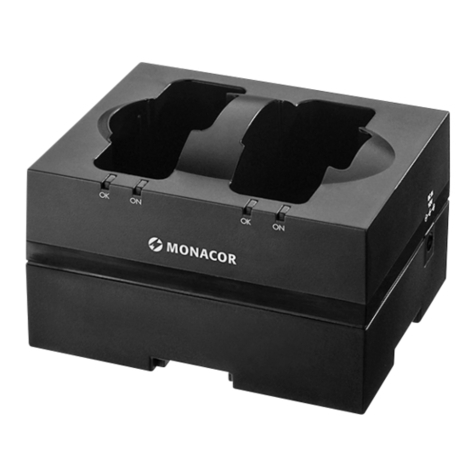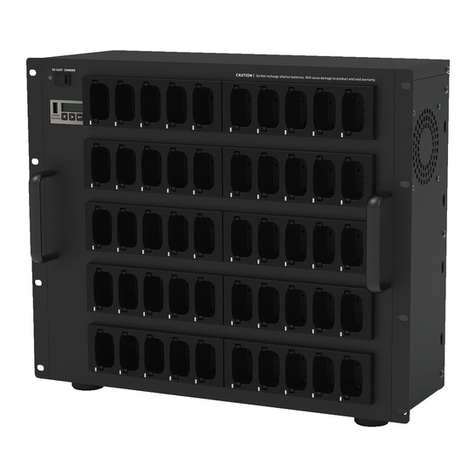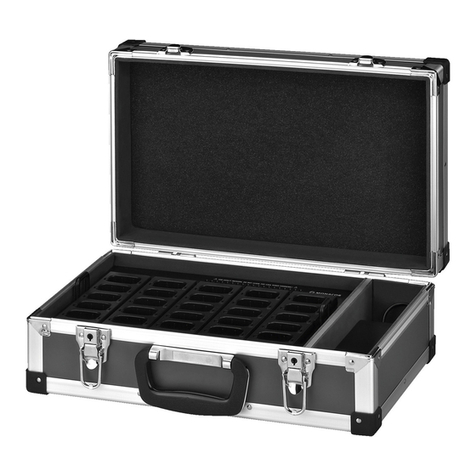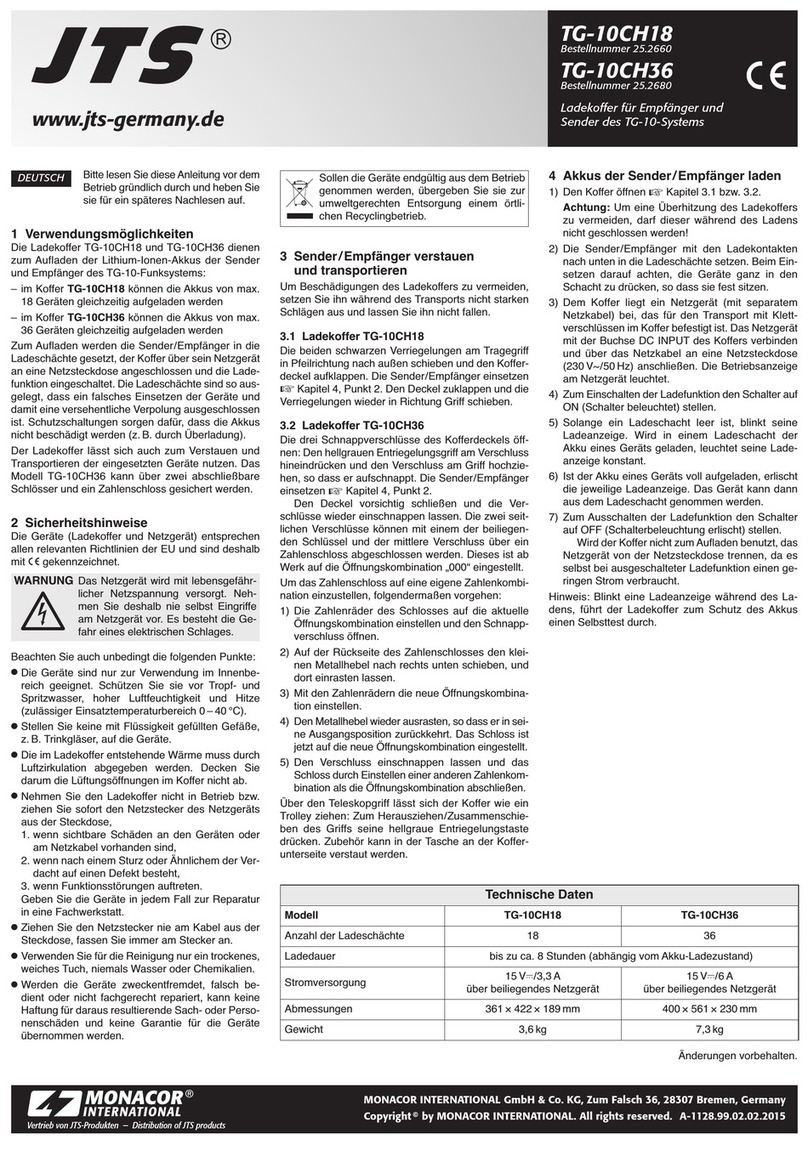Veuillez lire la présente notice avec at-
tention avant le fonctionnement et
conservez-la pour pouvoir vous y re-
porter ultérieurement.
1 Possibilités dʼutilisation
Ce chargeur permet de charger les accumulateurs
Lithium-ion des émetteurs et récepteurs du système
sans fil TG-10. Il est possible de charger simultanément
les accumulateurs de deux appareils.
Pour charger les accumulateurs, les émetteurs/les ré-
cepteurs se placent dans les compartiments de charge.
Ils sont configurés de telle sorte quʼun positionnement
incorrect des appareils et donc une inversion de polarité
involontaire sont exclus. Les circuits de protection évitent
tout dommage aux accumulateurs (p. ex. par surcharge).
2 Conseils de sécurité
Les appareils (chargeur et bloc secteur) répondent à
toutes les directives nécessaires de lʼUnion européenne
et portent donc le symbole .
Respectez scrupuleusement les points suivants :
GLes appareils ne sont conçus que pour une utilisation
en intérieur. Protégez-les de tout type de projections
dʼeau, des éclaboussures, dʼune humidité élevée de
lʼair et de la chaleur (plage de température de fonc-
tionnement autorisée : 0 – 40 °C).
AVERTISSEMENT : Le bloc secteur est ali-
menté par une tension dangereuse. Ne tou-
chez jamais lʼintérieur de lʼappareil, vous
pourriez subir une décharge électrique.
GEn aucun cas, vous ne devez poser dʼobjet contenant
du liquide ou un verre sur les appareils.
GLa chaleur dégagée par le chargeur doit être évacuée
par une circulation dʼair correcte. En aucun cas, les
ouïes de ventilation du boîtier ne doivent être obtu-
rées.
GNe faites jamais fonctionner le chargeur et débran-
chez immédiatement le bloc secteur lorsque :
1. des dommages visibles apparaissent sur les appa-
reils ou sur le cordon secteur.
2. après une chute ou accident similaire..., vous avez
un doute au sujet de lʼétat de lʼappareil.
3. des dysfonctionnements apparaissent.
Dans tous les cas, les dommages doivent être répa-
rés par un technicien spécialisé.
GTout cordon secteur endommagé doit être remplacé
par un technicien habilité.
GNe débranchez jamais lʼappareil en tirant sur le cor-
don secteur, tenez-le toujours par la fiche.
GPour le nettoyage utilisez uniquement un chiffon doux
et sec, en aucun cas de produits chimiques ou dʼeau.
GNous déclinons toute responsabilité en cas de dom-
mages matériels ou corporels résultants si les appa-
reils sont utilisés dans un but autre que celui pour
lequel ils ont été conçus, sʼils ne sont pas correcte-
ment utilisés ou ne sont pas réparés par une personne
habilitée, en outre, la garantie deviendrait caduque.
Lorsque les appareils sont définitivement reti-
rés du service, vous devez les déposer dans
une usine de recyclage adaptée pour contri-
buer à leur élimination non polluante.
3 Fonctionnement
1) Reliez le bloc secteur à la prise sur le chargeur et à
une prise secteur 230 V~/50 Hz. Le chargeur est ainsi
allumé. Tant quʻun compartiment de charge est vide,
son témoin de fonctionnement clignote.
2) Placez lʼémetteur/le récepteur dans un compartiment
de charge, contacts de charge orientés vers le bas.
Lorsque vous le positionnez, veillez à enfoncer com-
plètement lʼappareil dans le compartiment pour quʼil
soit bien fixe. Pendant la charge, le témoin de fonc-
tionnement du compartiment de charge brille en
continu.
3) Lorsque lʼaccumulateur est totalement chargé, le té-
moin de charge correspondant sʼéteint. Lʼappareil
peut alors être retiré du compartiment de charge.
4) Pour éteindre le chargeur, débranchez la fiche du
bloc secteur de la prise secteur.
Remarque : Si un témoin de charge clignote pendant la
charge, le chargeur effectue un auto-test pour protéger
lʼaccumulateur.
4 Caractéristiques techniques
Durée de charge : 8 heures max. environ (selon lʼétat
de charge de lʼaccumulateur)
Alimentation : . . . 12 V /600 mA via le bloc secteur
livré
Dimensions : . . . . 75 × 41 × 85 mm
Tout droit de modification réservé.
Vertrieb von JTS-Produkten — Distribution of JTS products
®
www.jts-germany.de
Copyright ©by MONACOR INTERNATIONAL GmbH & Co. KG, Bremen, Germany. All rights reserved.
A-1127.98.01.06.2010
TG -10CH2
Chargeur pour les récepteurs
et les émetteurs du système TG-10
Cargador de baterías para receptores
y emisores del sistema TG-10
Lea atentamente las instrucciones de
funcionamiento antes de utilizar el apa-
rato y guárdelas para usos posteriores.
1 Aplicaciones
Este cargador se utiliza para recargar las baterías
Li-Ion de los emisores y receptores del sistema inalám-
brico TG-10. Pueden recargarse las baterías de dos uni-
dades al mismo tiempo.
Para recargar las baterías, inserte los emisores/re-
ceptores en los compartimentos de carga. El diseño de
los compartimentos de carga asegura la correcta inser-
ción de los aparatos, evitando errores en la polaridad.
Los circuitos de protección están provistos para prevenir
daños en las baterías, por ejemplo por una sobrecarga.
2 Notas de Seguridad
Los aparatos (mezclador y alimentador) cumplen con
todas las directivas requeridas por la UE y por lo tanto
están marcados con el símbolo .
Preste atención a los siguientes puntos bajo cualquier
circunstancia:
GLos aparatos están adecuados para su utilización
sólo en interiores. Proteja los aparatos de goteos y de
salpicaduras, de la elevada humedad del aire y del
calor (temperatura ambiente admisible: 0 – 40 ºC).
ADVERTENCIA: El alimentador utiliza un
voltaje de corriente peligroso. Deje el man-
tenimiento en manos del personal cuali-
ficado. El manejo inexperto o la modifica-
ción del aparato pueden provocar una
descarga.
GNo coloque ningún recipiente con líquido encima de
los aparatos, p. ej. un vaso.
GEl calor generado en el interior del cargador tiene que
disiparse con la circulación del aire. Así pues, no
cubra las rejillas de ventilación de la carcasa.
GNo utilice el cargador y desconecte inmediatamente
el alimentador de la toma de corriente si
1. Los aparatos o el cable de corriente están visible-
mente dañados.
2. Alguno de los aparatos ha sufrido daños después
de una caída o accidente similar.
3. No funciona correctamente.
Sólo el personal cualificado puede reparar los apara-
tos bajo cualquier circunstancia.
GUn cable de corriente dañado del alimentador sólo
puede repararse por el personal cualificado.
GNo tire nunca del cable de corriente para desconec-
tar el enchufe de la toma de corriente, tire siempre del
enchufe.
GUtilice sólo un paño suave y seco para la limpieza; no
utilice nunca ni agua ni productos químicos.
GNo podrá reclamarse garantía o responsabilidad
alguna por cualquier daño personal o material re-
sultante si los aparatos se utilizan para otros fines
diferentes a los originalmente concebidos, si no se
utilizan adecuadamente o no se reparan por exper-
tos.
Si va a poner los aparatos fuera de servicio
definitivamente, llévelos a la planta de reci-
claje más cercana para que su eliminación no
sea perjudicial para el medioambiente.
3 Funcionamiento
1) Conecte el alimentador a la toma del cargador y a
una toma de corriente (230 V~/50 Hz). De este modo,
se conecta el cargador. Mientras un compartimento
de carga esté vacío, su LED de carga se mantendrá
parpadeando.
2) Inserte el emisor/receptor, con sus contactos de
carga mirando hacia abajo, en uno de los comparti-
mentos de carga. Cuando lo inserte, empuje el apa-
rato hacia el compartimento para asegurar un buen
encaje. Durante la carga, se iluminará el LED de
carga del compartimento permanentemente.
3) Cuando la batería del aparato esté completamente
cargada, se apagará el LED de carga correspon-
diente. El aparato puede sacarse del compartimento.
4) Para desconectar el cargador, desconecte el enchu-
fe del alimentador de la toma de corriente.
Nota: Si un LED de carga empieza a parpadear mien-
tras la carga está en proceso, el cargador hará un auto-
test para proteger la batería.
4 Especificaciones
Tiempo de carga: Hasta 8 horas aprox. (dependien-
do del estado de la batería)
Alimentación: . . . 12 V /600 mA mediante el alimen-
tador entregado
Dimensiones: . . . 75 × 41 × 85 mm
Sujeto a modificaciones técnicas.
FRANÇAIS
ESPAGÑOL

